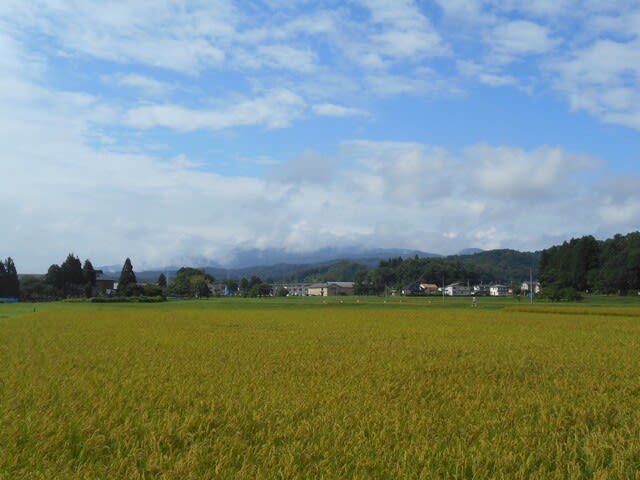History, or social science, has long developed through causal relationships, descriptions, and the diversification of viewpoints. seems to have come And while the natural sciences began to develop based on mechanics, the social sciences tended to be more medical and biological. Academic development has been made in the sense of treating social problems, but just as medicine and biology have greatly benefited from the achievements of physics, social sciences have learned much from mechanics and physics. maybe we should start. The starting point will be the analysis of various forces in civilization and history. In the social sciences, economics may have some similarities to physics. Economics can be said to be a science that believes in certain powers. A kind of force is based on the idea that "price or something equivalent to a price" serves as a signal and influences the behavior of the demand side and the supply side, that is, the price can be a force that motivates human behavior. That's why. Various factors have caused the price function to stop working, which has led to differences of opinion. Has economics oversimplified human society? The position of economics has been the position of the United States and the viewpoint of economic news, but it does not seem that the various civilizations of the world will accept it as it is.
Why did the achievements of physics have had an impact on other disciplines, and why have they provided a universal foundation? It may be hinted at by thinking about the difference between economics and physics. The difference between economics and physics seems to lie in the belief in a single force or the existence of forces. While economics believes in the power of price, physics focuses on the individuality of various forces (gravity, light, electric power, magnetic force, nuclear power) and attempts to explain them in a unified manner.
Applying this to the theory of civilization, Europe, America, Russia, the Middle East, Africa, India, and China are all different ``fields,'' and each ``field'' has its own unique characteristics. ” and are working. Is it difficult, or even impossible, to explain this in terms of a single force, the "price" in economics ? Therefore, the way of thinking that provides hints for the diversification and integration of the world should not be based on current economics, but rather on physics.
What are the unique powers of each “place” or “civilization”, and what are the concepts and theories that make it easier to explain them? As I have said so far, "values" that change over time and based on them, people want "richer lives", or "community development" based on "values", and trying to return to what is inherent in human society. Isn't it taking into consideration .
By applying such things to each civilization, it will be possible to understand how different civilizations think and act in that way. Although the power game-like power factor also accompanies history.
With that out of the way, let's wrap up. What I have been thinking about in this article is what is the "motive force that changes history." And I confirmed the existence of various forces in this kind of scholarship and social science. Toynbee and Spengler had already intuitively grasped things like "trends" in the history of civilization, but the position of this paper is neither an energetic theory like Spengler, nor a fatalism like Spengler, nor a function theory like Toynbee. I didn't. Nor was he in the position of reading characteristics and functions common to one civilization (e.g., European civilization) and extending them to other civilizations. On the other hand, it was also different from the position of historical science that pursues causal relationships.
The concept of "the driving force to change civilization and history" is similar to the position Newton took in "Principia", and in the social sciences, it is necessary to start with definitions of various forces and analyze the characteristics of each force to establish a more solid foundation. I take the position that it is possible to obtain In the social sciences, the value of the subject is inevitably large, but that would be like discussing the characteristics of the earth or the moon individually when explaining gravitational force in physics.
The concepts of minimum force are ``technical efficiency force'', ``social structure force'', ``reaction force'', and ``value''. and environment give direction to these.
In order to prove the existence of various forces such as "technical efficiency force", "social structure force", "reaction force", "value", and "environment", we have no choice but to investigate the history of each civilization, draw up historical facts, and make inferences. . However, if we make a hypothesis to gain some perspective on the work of induction, the following five principles may be mentioned.
1 Values change over time.
2 Technical efficiency force is a function of value.
3 Social structural force is a function of value.
4 Reaction force is a function of value.
5 Environmental Principles (Field Principles*)
These five principles are the principles of various forces in social science that are important in inferring what kind of problems each civilization is currently facing and how they are trying to solve them. These ideas were born from the synthesis of the considerations of past historians, but they are also considered to be important concepts of force as tools for predicting the future. In addition to this, the issue of the emergence of creative rulers and the ability of the masses to imitate, a theme discovered by Toynbee, may become important.
Also, in this paper, time is initially regarded as a resource, and on the left-hand side, the production volume of creation, which is the output produced by time (the sum of the production volume of mental creation and the production volume of material creation) is shown, On the right-hand side, we place technological efficiency, social structure, and counteracting forces as factors that affect the production of creations, and assume that these forces are influenced by the direction of value that changes over time.
In this formula with time as one axis, time itself exists as a resource, but it is neutral and does not form anything unless the players in each history invest it. But historical players weren't aware that the value they held was a function of time and that they existed above it.
When thinking about formulas with time as one axis, it is easy to understand that what forms the basis of their development is how we perceive "value." Because in the time axis, by specifying a certain point in time and specifying values, the technological efficiency, social structural force, and reaction force of that society are selected and specified, and the spiritual creation, material one . This is because the amount of production of the creative creation is determined. Therefore, it is necessary to think about the structure of value. Value is the premise of various forces, but even at one point in time, it can be diverse ( various genres), and in a sense, it is like a "group in the image space". It may take shape. On another occasion, I would like to consider the theme of "civilization and value."
A formula with time as one axis is a 'relational formula' that expresses the path through which time, a resource that has no meaning by itself, leads to the production of creations. Values (groups in image space) as a function of time influence technological efficiency forces, social structure forces, and reaction forces, and these factors produce mental and physical creations (substantial space). and This is based on the idea of the production function in economics, but I also touched on the problem that there is no common element that connects the right-hand side and the left-hand side. The problem with this formula is that each concept is not quantified, and neither the technical efficiency force, social structure force, and reaction force on the right side nor the mental creation on the left side is quantified, nor is the value. It has not been quantified, and how much force or value will be converted into data and digitized, or whether something like "currency" that converts value or power will be invented. I guess it depends.
From a different point of view, this "relational formula" can be said to be a formula that systematically expresses the structure of mental energy. Value changes over time. However, it is also possible to think that it will change through the "cross-cutting" contact of economy, politics, and culture. On the other hand, this paper recognizes that there is something like "mental energy that fluctuates only in relation to time", and that it is stronger than "cross-cutting relationships". This perception is inspired by Toynbee's idea of civilization, that civilization commits suicide, that the collapse of civilization does not come from outside enemies, but from within. In other words, the powers move in a fused manner during the period of development, but move separately during the period of decline.
The model we are trying to build is naive. However, there are some obvious differences from traditional historical analyses. It analyzes the various forces of civilization change and stands on the viewpoint of whether they can be utilized in the future. And this is precisely what Spengler and Toynbee were trying to do intuitively and boldly in the early days of civilization studies. And then Braudel and Wallerstein appeared, and something may be forming. Just as feudalism gave rise to sovereign nations, it would correspond to the emergence of "civilized economies" from sovereign nations.
From a policy perspective, for example, countries like Japan are good at learning models from other countries and developing, but are not good at creating their own models. For example, to avoid unnecessary conflicts between countries with different nationalities, there are a number of situations in which the idea of this model can be applied.
Understanding and manipulating value. Understanding and manipulating forces. This model is oriented to adjusting the driving force through manipulation in this way, and proposes one of the hypotheses.
In addition, as the battle against the environment is now entering the stage of the battle against time, it seems that this model has the potential to respond as one of the worldviews seen from the resource of time. After the era of the world system, it will be the era of various civilizations, and what is necessary for them to coexist and co-prosper will become important.
All rights reserved to M Ariake






























